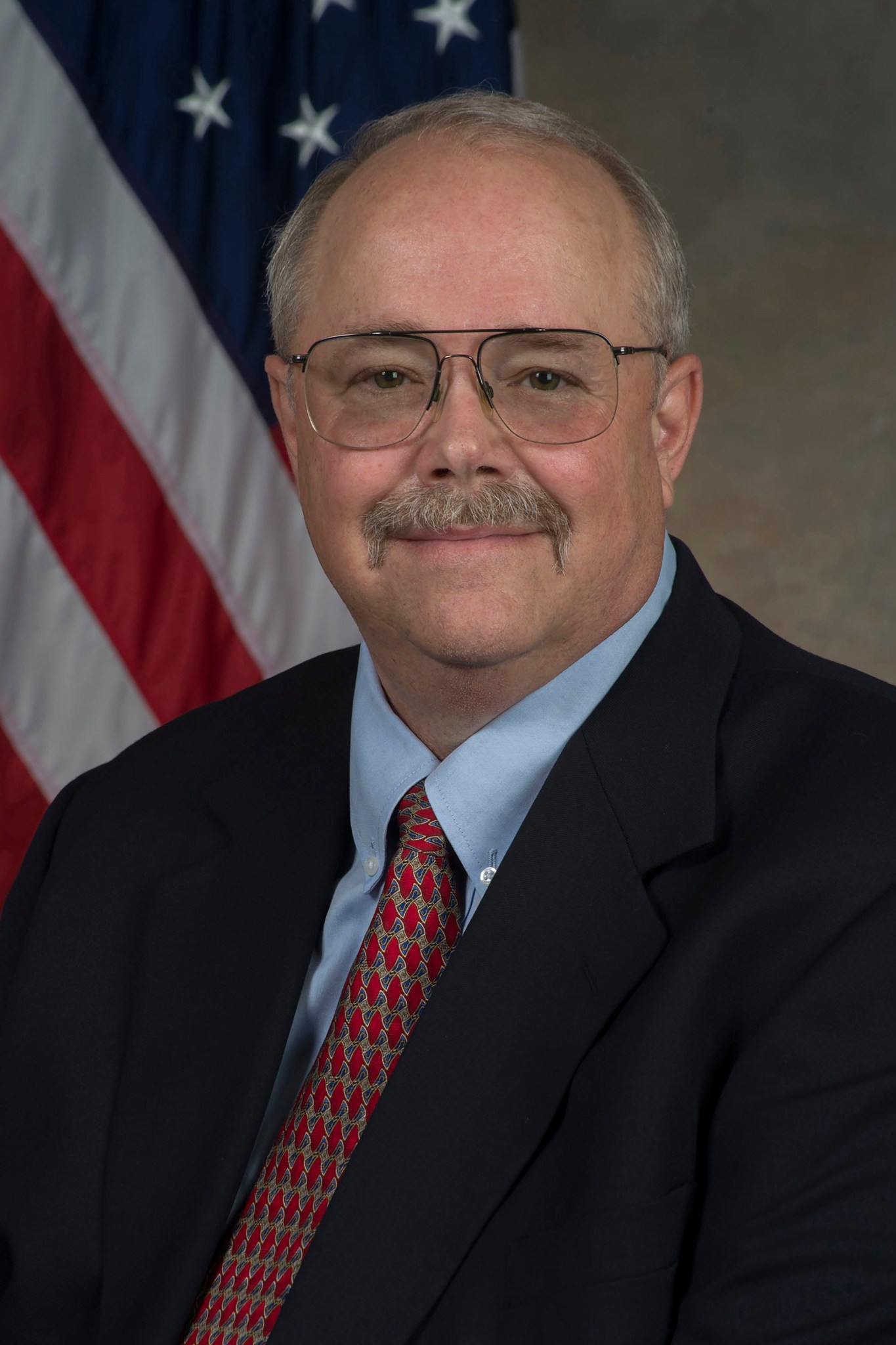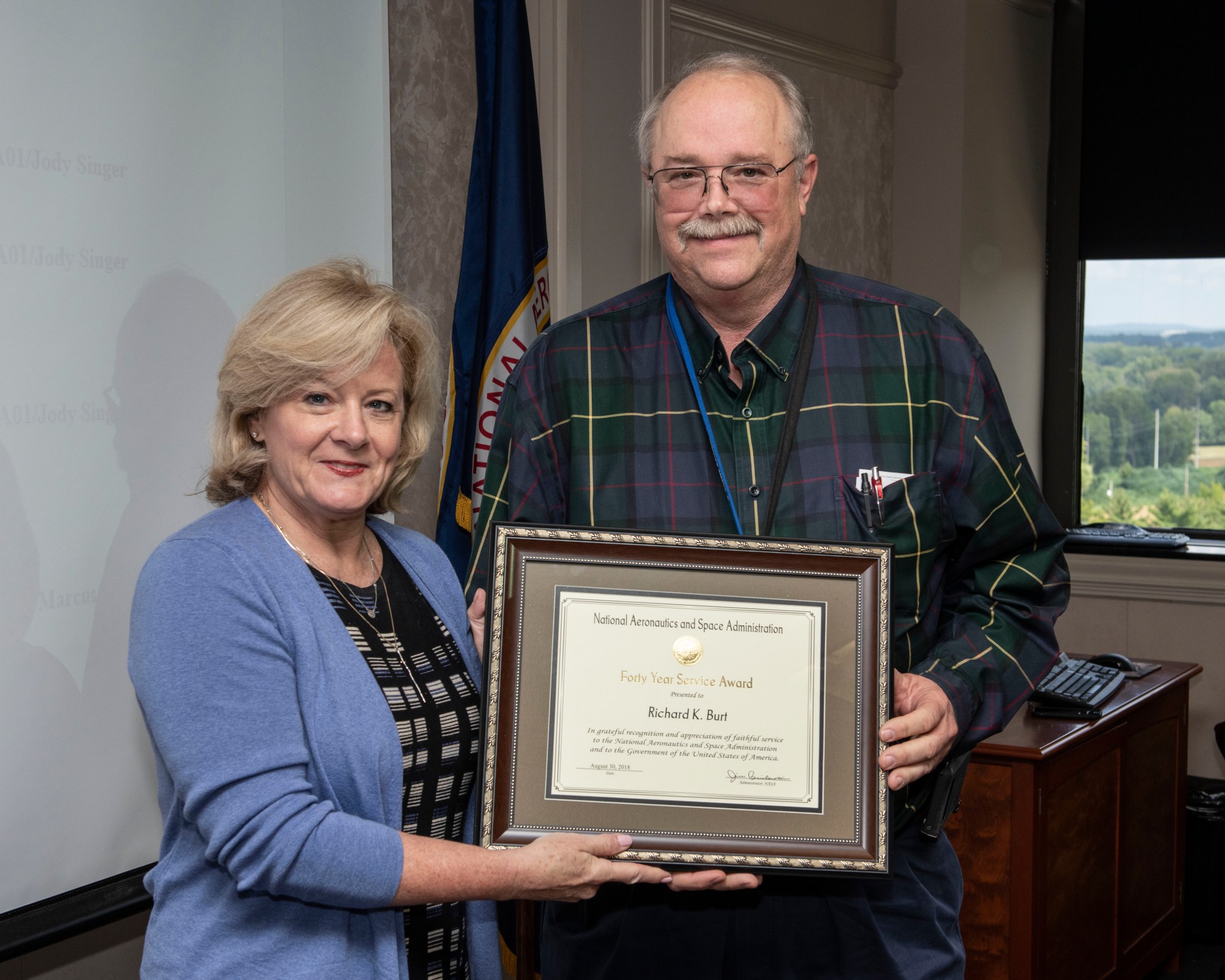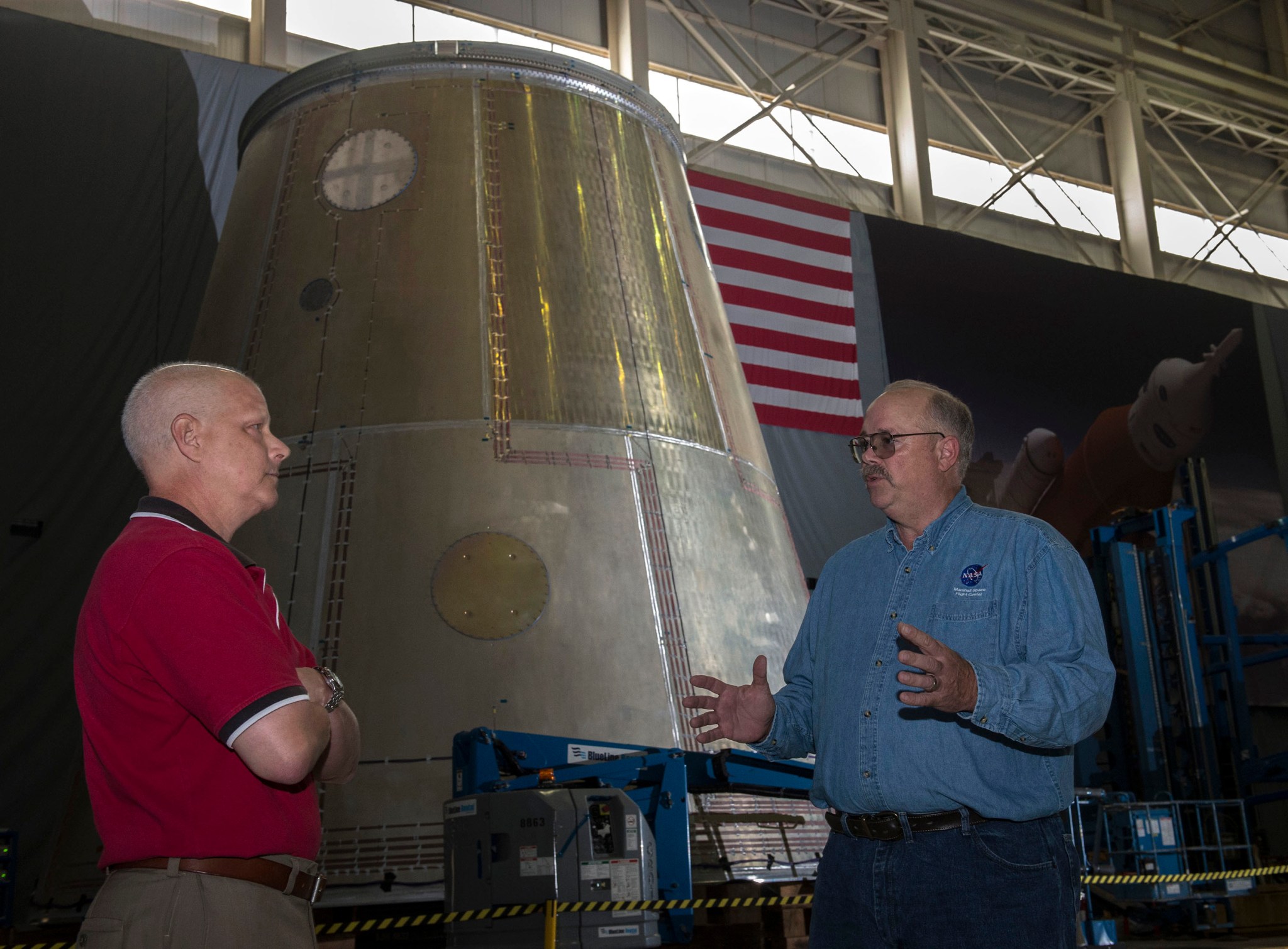As the newly appointed deputy director of NASA’s Marshall Space Flight Center in Huntsville, Alabama, Richard “Rick” Burt helps guide the next era in exploration and discovery for one of NASA’s largest field installations, with a broad portfolio of human spaceflight, science, and technology development efforts that touch nearly every mission NASA pursues.
Turns out growing up on his family’s farm in Columbia, Tennessee, was just the career training he needed. He and his older brother Danny spent weekends and summers as de facto farmhands – honing skills Burt would leverage throughout his NASA years.

“We quickly learned to be jacks of all trades: carpenters, mechanics, veterinarians,” he said. “I grew up baling hay, tending livestock, running and repairing tractors, and tinkering with machinery – and the latter got me interested in engineering.”
Danny – whom Burt credits, along with their father, for teaching him the value of hard work and applying ingenuity to solve problems – went into the family cattle trade not far from the old homestead. Burt, however, has spent more than 30 years supporting and leading design, construction, testing, and quality assurance certification of machines – some of them quite a bit larger than his dad’s tractor.

It was a leap of faith, he said, but his family gave him the skills and confidence to take it. He also credits his upbringing for teaching him to embrace Marshall’s 21st century business strategy: risk leadership. More than just practiced managerial oversight, risk leadership identifies and addresses the enterprise-wide costs and impact of risk, seeking open communications and top-down cooperation among an entire workforce and all those contributing or standing to benefit from the task.
“NASA has a long history of success, but not without risk, and not without mishaps,” Burt said. “True risk leadership examines risks associated with any challenging endeavor, and weighs those risk against manageable development cycle factors including time and cost, near-term and long-term mission goals, and the potential rewards of success.”
The nation’s space program can’t be overly risk averse and still meet its objectives, he added. “The safest ships may be those in the harbor,” he said, “but that’s not what ships are built for.”
At the same time, Burt’s years supporting the space shuttle program – often working side by side with astronauts waiting their turn to ride the rockets – guide him every day.
“It drove home the impact and importance of the work,” he said. “We only borrow astronauts from their families to fly a mission, and it’s our job to get them safely up there and safely back home again, making each mission as safe and successful as possible.”
He’s proud of how Marshall continues to champion safety in the midst of a pandemic, with so many team members working virtually. “We’ve done a great job staying productive,” he said, “continuing to build and fly hardware, conduct major milestone reviews, and meet our other obligations to the American people. We haven’t missed a beat.”
“There’s a real sense of pride,” he said. “I never tired of working at a place as special as Marshall, which inspires and motivates so many people.”
More than three decades in, and Rick Burt’s still eager and ready to do the job til the cows come home.

More about Rick Burt
After earning a bachelor’s degree in mechanical engineering in 1978 from Tennessee Technological University in Cookeville, Burt worked for 12 years for the Tennessee Valley Authority’s nuclear power program. He joined NASA in 1990 as a manager in Marshall’s Reusable Solid Rocket Motor Project. From 1998-1999, he led development, testing, and evaluation of all shuttle propulsion elements as deputy manager of the Space Shuttle Projects Office. As chief engineer for the Reusable Solid Rocket Motor Project from 2000-2005, he guided technical reviews to return NASA to flight after the loss of space shuttle Columbia in 2003.
Following his appointment in 2006 to the Senior Executive Service – the personnel system covering top managerial positions in federal agencies – Burt was named manager of the Ares I First Stage, the rocket program which preceded development of NASA’s new flagship launch vehicle, the Space Launch System. He managed the Engineering Directorate’s Test Laboratory from 2007 to 2011, and served as Marshall’s chief safety officer in the Safety and Mission Assurance Directorate from 2011-2016, when he was named director of that organization, overseeing all safety, reliability, and quality assurance operations for the center.
He received the NASA Outstanding Leadership Medal in 2005 for his support of the space shuttle’s return to flight. In 1997, he received the Silver Snoopy Award, presented by NASA’s astronaut corps for outstanding contributions to the space program. He also was a Spaceflight Awareness honoree, the highest honor bestowed on NASA workers by the agency’s Spaceflight Awareness Program, in 1996.
Burt and his wife Susan reside in Rogersville, Alabama.

























